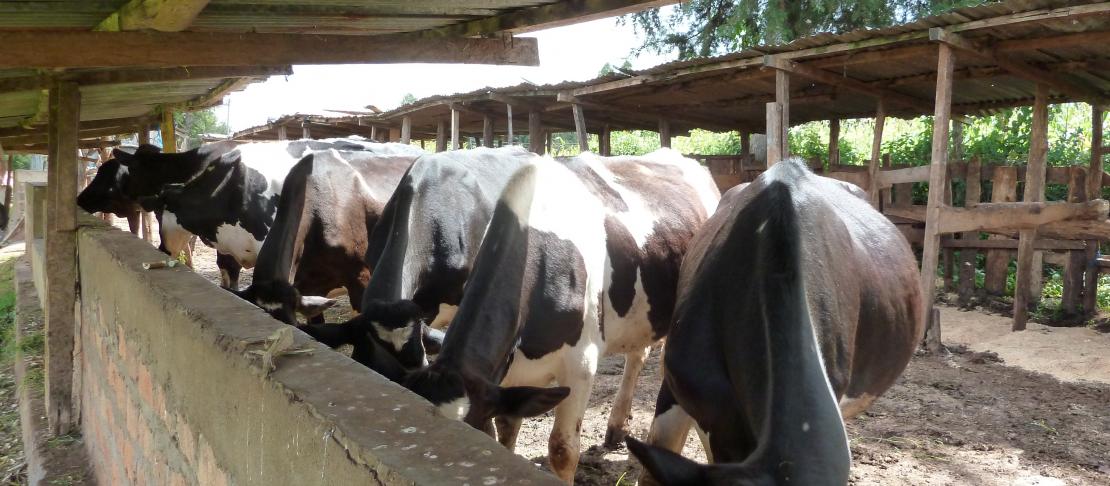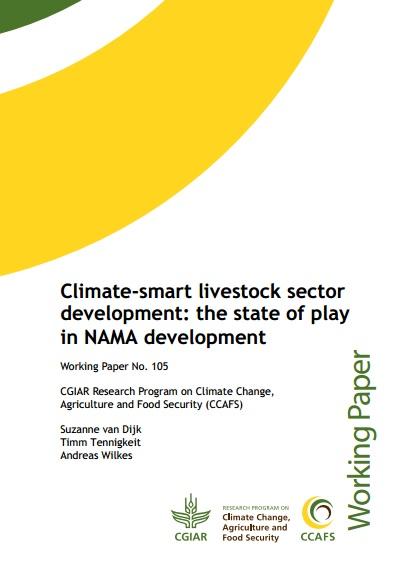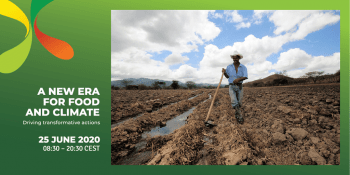Reducing the environmental impact of a rapidly growing livestock sector

Livestock Nationally Appropriate Mitigation Actions (NAMAs) aim to enhance productivity and efficiency while also reducing environmental impact. A synthesis of the state of play of livestock NAMAs across the globe is now available.
Livestock is a source of nutrients from meat and dairy and contributes significantly to livelihoods, directly supporting smallholder farmers and creating employment. Livestock also provides power through animal traction, manure to fertilize future crop production and security by acting as a kind of insurance.
And with expected growth of the world population, growing prosperity and urbanization, the expected increased demand for animal-source foods will cause profound growth in the livestock sector. While this expected growth will create opportunities, it may also result in adverse and long-lasting negative environmental impacts. Currently, the sector uses a large share of the global surface area, contributes to degradation of land and forests, causes pollution and emits approximately 14% of all human-induced greenhouse gas emissions.
A new CCAFS working paper, Climate-smart livestock sector development: the state of play in NAMA development, sheds light on key elements in the development of Nationally Appropriate Mitigation Actions (NAMAs) within the livestock sector. The authors, from UNIQUE Forestry and Land Use, find that the sector can enhance productivity and efficiency while also reducing environmental impacts.
Why prioritize mitigation activities in the livestock sector?
Synergies between livestock development and mitigation of greenhouse gases provide a timely opportunity to address opportunites and challenges posed by growth in the livestock sector within development and agricultural initiatives. Mitigation approaches can be supported by a vast foundation of knowledge, best practices and technologies. Researchers have found that emissions could be reduced by 18-30% without reducing overall outputs by applying best low emission practices (Gerber et al. 2013).
Most mitigation technologies and practices may also improve productivity and contribute to food security and poverty alleviation. For example, mitigation activities may include increasing production efficiencies – by reducing emissions per livestock product – or shifting production-related investments towards less emission-intensive feed.
NAMAs: What are they and how are they related to agriculture?
Within the United Nations Framework Convention on Climate Change (UNFCCC), NAMAs are mitigation actions undertaken to support national sustainable development, to be implemented with domestic or international support in financing, technology or capacity building. Although the NAMA concept was first introduced at the United Nations Conference of Parties in Bali in 2007, progress in implementation - across sectors - has been slow.
In the context of Intended Nationally Determined Contributions (INDC) covering mitigation and adaptation targets as well as the means of implementation (finance, technology transfer and capacity building), support for sectoral NAMAs is expected to increase. The agriculture sector is striving to increase awareness of the relevance of mitigation and improve reduction and monitoring of non-point emissions across many individual farms - necessary preqrequisites to agricultural NAMAs.
Within the agricultural sector, livestock NAMAs hold promise due to sector dynamics, substantial investments and relatively well organized sub-sectors. Already, mitigation activities within the livestock sector are becoming increasingly important in many countries' NAMAs.
Looking Ahead
Given the projected increase in the demand for animal-source foods in developing countries and trends in livestock emissions and other environmental impacts, there is an urgent need for transformational change in livestock production.
By developing NAMAs that focus on the livestock sector, there is a large potential for climate-smart agriculture to increase production, climate resilience and animal welfare while also reducing emissions.
Authors of the working paper conclude that though challenges remain, livestock NAMAs can promote adoption of climate-smart livestock production systems, provide attractive investment opportunities to reduce the environmental impact of the sector, and also promote food security and enhance local livelihoods.
Gerber PJ, Steinfeld H, Henderson B, Mottet A, Opio C, Dijkman J, Falcucci A, Tempio G. 2013. Tackling climate change through livestock – A global assessment of emissions and mitigation opportunities. Food and Agriculture Organization of the United Nations (FAO), Rome.




